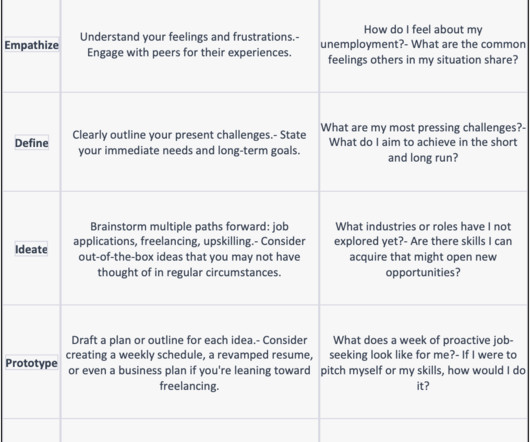Transforming Your Business with Bottom-Up Management: The Design Thinking Way
Tullio Siragusa
DECEMBER 18, 2023
This section explores how integrating empathy, ideation, and diverse skills can revolutionize employee engagement. Fostering a mindset of ideation where employees are encouraged to think outside the box during brainstorming sessions and suggestion programs. Benefits This approach leads to increased engagement and motivation.
















Let's personalize your content